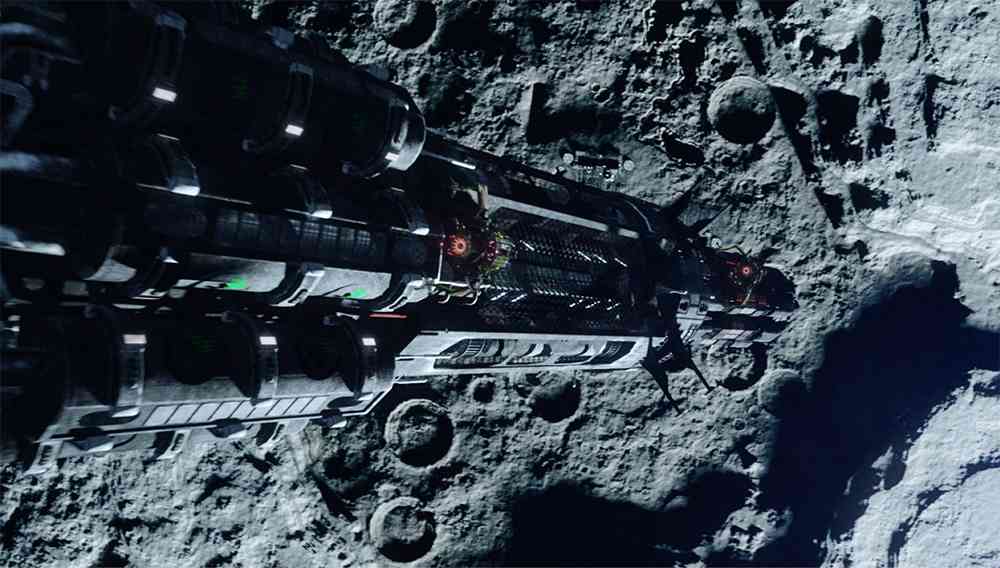-
Tips for becoming a good boxer - November 6, 2020
-
7 expert tips for making your hens night a memorable one - November 6, 2020
-
5 reasons to host your Christmas party on a cruise boat - November 6, 2020
-
What to do when you’re charged with a crime - November 6, 2020
-
Should you get one or multiple dogs? Here’s all you need to know - November 3, 2020
-
A Guide: How to Build Your Very Own Magic Mirror - February 14, 2019
-
Our Top Inspirational Baseball Stars - November 24, 2018
-
Five Tech Tools That Will Help You Turn Your Blog into a Business - November 24, 2018
-
How to Indulge on Vacation without Expanding Your Waist - November 9, 2018
-
5 Strategies for Businesses to Appeal to Today’s Increasingly Mobile-Crazed Customers - November 9, 2018
Nasa’s Dawn Probe Reveals Finer Details of Crater on Ceres
These photographs were taken when the spacecraft reached its lowest and current altitude of 385 km from Ceres.
Advertisement
The Kupalo Crater was of particular interest, as it was captured with a resolution of 120 feet per pixel.
NASA’s Dawn spacecraft took the new photos during its lowest orbiting altitude of 240 miles above Ceres, at the end of 2015.
Kupalo’s rim plays host to some bright areas that might be salt deposits. The crater’s flat floor is likely the result of impact melt and debris. The tiny world, visited by NASA’s Dawn spacecraft, teased scientists for months with glimpses of odd bright spots. Dawn’s science team plans to analyze the chemical signatures of the material there, as well as in the bright spots in Occator Crater and elsewhere, to clinch the case. Researchers will try to determine if the material on the craters is related.Kupalo is 16 miles across (26 kilometers) and is named for “the Slavic god of vegetation and harvest”.
“This crater and its recently-formed deposits will be a prime target of study for the team as Dawn continues to explore Ceres in its final mapping phase”, Dawn team member Paul Schenk said. This 78-mile (126-km) wide crater has similar fractures to those on Tycho, one of our Moon’s youngest large craters.
This Dec. 21 picture from NASA’s Dawn spacecraft shows the fractured floor of Dantu Crater on Ceres.
Dantu shows a network of fractures, probably associated with the impact that formed it, while on December 23 the probe snapped the unnamed crater west of Dantu. The curvilinear nature of the scarps resembles those on the floor of Rheasilvia, the giant impact crater on Vesta, which Dawn orbited from 2011 to 2012.
The $466 million Dawn mission launched in September 2007, on a mission to study Vesta and Ceres, the two largest objects in the main asteroid belt between Mars and Jupiter.
In its final orbit, Dawn’s visible and infrared mapping spectrometer will monitor wavelengths of reflected light to identify minerals on Ceres’ surface.
The next crater Dawn zoomed in on is Dantu Crater. It is covered in ridges and scarps (steep slopes).
Dawn’s gamma ray and neutron detector (GRaND) is also keeping scientists busy.
Dawn will continue to remain at its current altitude for the rest of its mission and indefinitely afterward. “Ceres did not disappoint”, said Chris Russell, principal investigator for the Dawn mission.
Ah, Ceres, you old minx. Go to this webpage and click on an option.
“When we set sail for Ceres upon completing our Vesta exploration, we expected to be surprised by what we found on our next stop”.
Advertisement
Imagery from NASA’s Dawn spacecraft, now in its closest orbit of the dwarf planet Ceres, reveal textures, landscapes and bright streaks possibly made of salts exposed by violent collisions with asteroids.




























